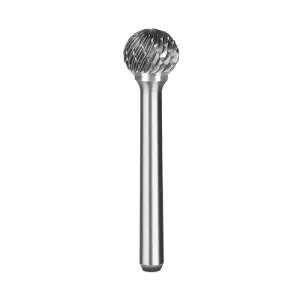Carbide Rotary Burs are widely valued for their durability and precision in metalworking, woodworking, and other material removal tasks. However, when these tools are used for long periods of continuous machining, heat buildup becomes a critical factor that can influence performance. Excessive heat not only affects the cutting efficiency but may also reduce the lifespan of the bur, compromise surface quality, and pose safety risks. Understanding how prolonged use impacts temperature and performance is essential for operators seeking consistent results in industrial or workshop settings.

Mechanisms of Heat Generation
During continuous cutting, friction between the bur and the workpiece generates heat. The harder the material, the greater the resistance and consequently the more significant the temperature rise. In addition to friction, high-speed rotations and pressure applied during cutting amplify thermal buildup. The geometry of the bur, including flute design and tip shape, also affects heat dissipation. Improper feed rates or excessive cutting depth can exacerbate temperature increases, potentially causing thermal softening or micro-fractures in the carbide material.
Effects on Tool Performance
As the temperature rises, Carbide Rotary Burs may experience a gradual reduction in cutting efficiency. Excessive heat can dull the cutting edges more quickly, making it harder to achieve smooth finishes and precise material removal. In extreme cases, the structural integrity of the bur can be compromised, causing chipping or breakage. Heat-related wear is particularly pronounced when machining hard metals like stainless steel or titanium alloys. Even materials that are easier to cut can contribute to significant thermal accumulation during long continuous runs if the tool is not properly managed.
Influence on Workpiece Quality
Overheating not only affects the tool itself but also the workpiece. Elevated temperatures can cause discoloration, warping, or surface hardening in certain metals, reducing the overall quality of the finished product. In precision applications, even minor temperature fluctuations can result in dimensional inaccuracies or uneven surface textures. Maintaining a suitable thermal balance is therefore crucial to ensuring both the longevity of the bur and the quality of the workpiece.
Strategies to Mitigate Overheating
Operators can adopt several strategies to reduce heat buildup during continuous use. Proper selection of rotation speed and feed rate helps balance cutting efficiency with temperature control. Utilizing coolant or lubrication can significantly improve heat dissipation and prolong tool life. But design considerations, such as incorporating flutes for better chip removal, also play an important role. Scheduled pauses in prolonged machining operations allow the tool to cool naturally, preventing excessive thermal accumulation. In high-demand industrial environments, advanced coatings or specialized carbide formulations can further enhance heat resistance and maintain performance under continuous load.
Long-term continuous machining can cause significant heat buildup in Carbide Rotary Burs, impacting both tool performance and workpiece quality. Awareness of the underlying mechanisms, combined with careful operational strategies, is essential to mitigate these effects. Proper speed control, effective cooling, optimized bur design, and periodic rest intervals all contribute to maintaining efficiency and extending tool life. By addressing thermal challenges proactively, operators can ensure that Carbide Rotary Burs remain effective and reliable during extended continuous use.